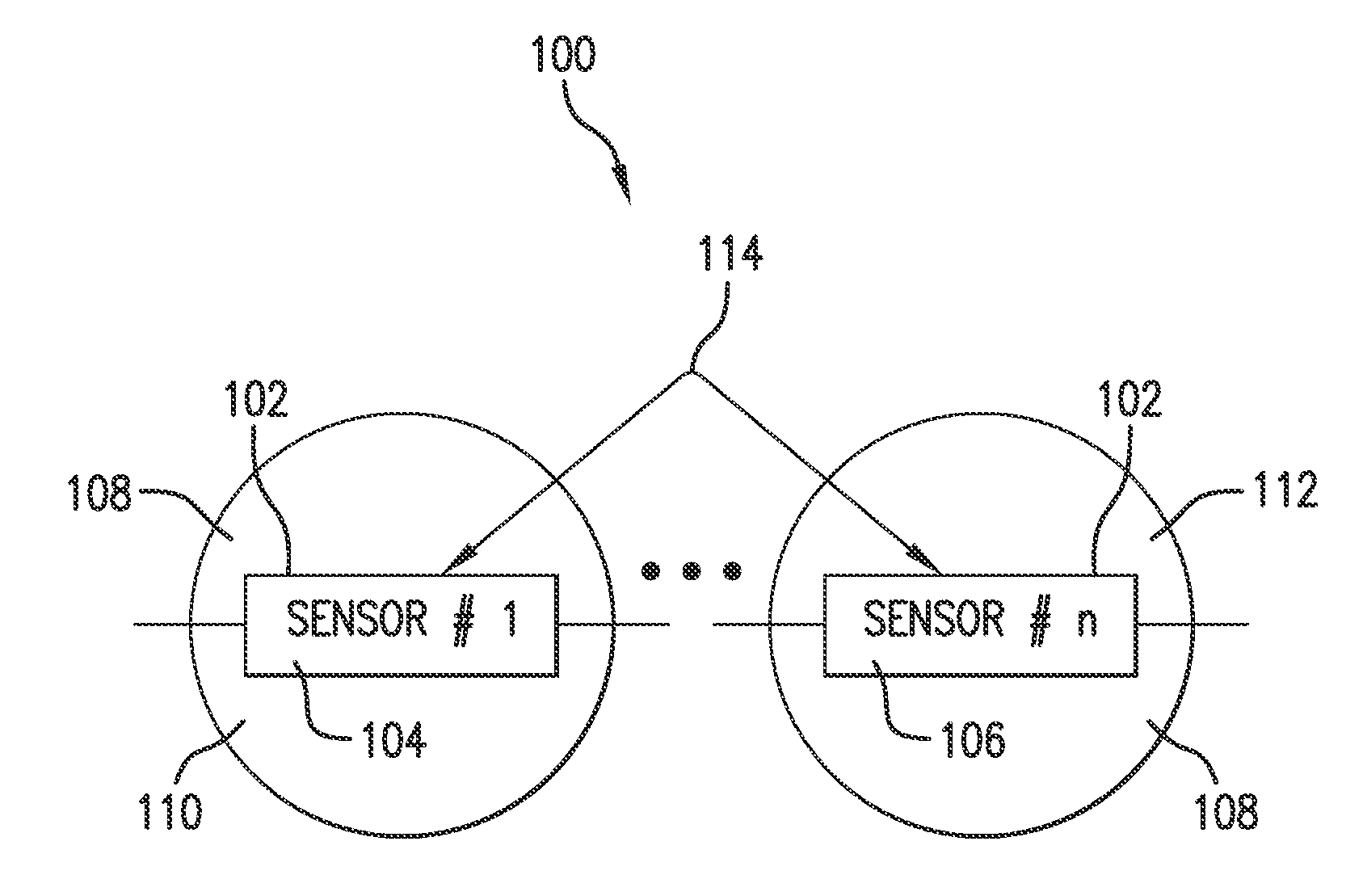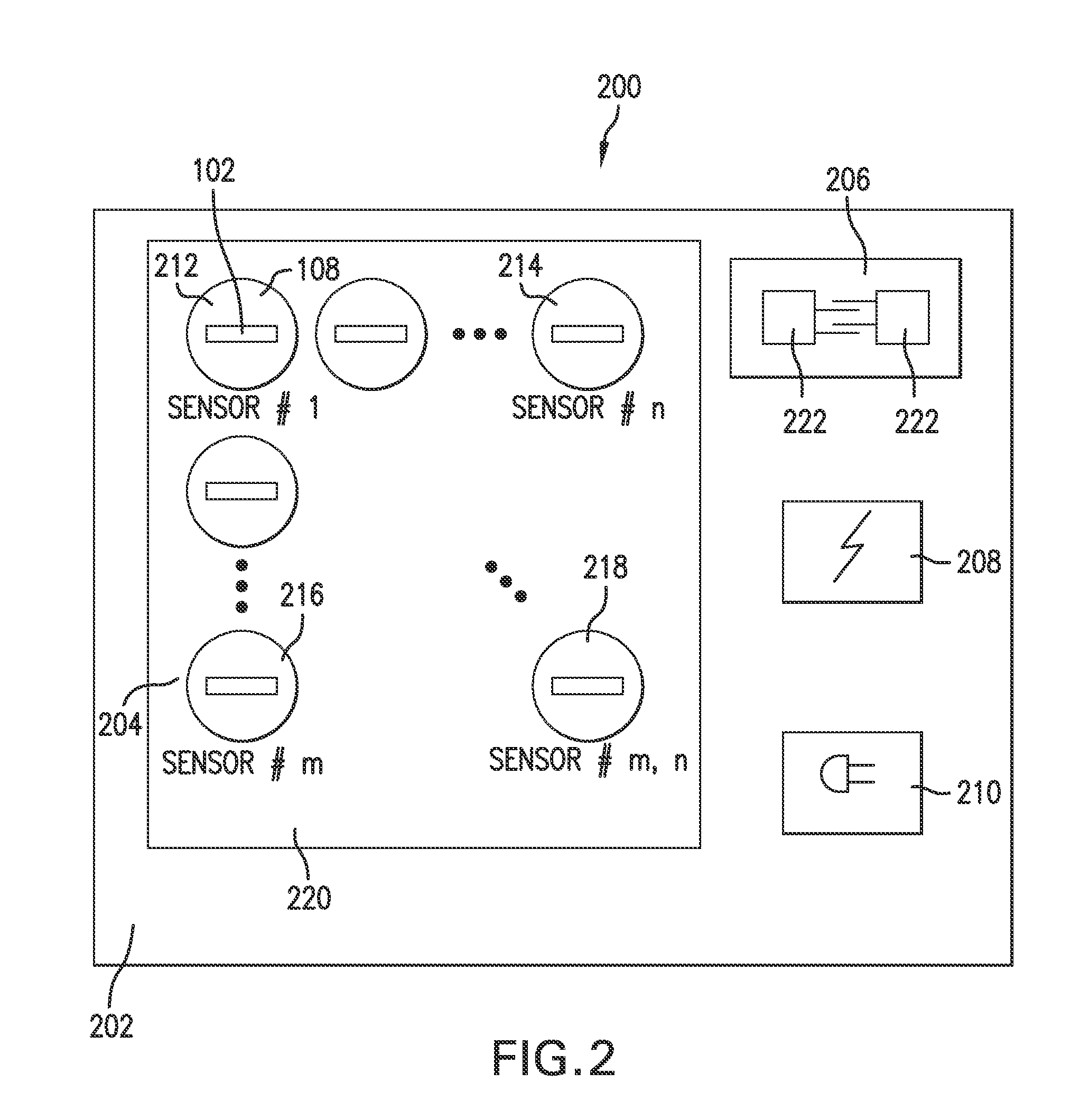Wireless, motion and position-sensing, integrating radiation sensor for occupational and environmental dosimetry
- Summary
- Abstract
- Description
- Claims
- Application Information
AI Technical Summary
Benefits of technology
Problems solved by technology
Method used
Image
Examples
Embodiment Construction
Definitions
[0034]Where the definition of terms departs from the commonly used meaning of the term, applicant intends to utilize the definitions provided below, unless specifically indicated.
[0035]For the purposes of the present invention, directional terms such as “top”, “bottom”, “upper”, “lower”, “above”, “below”, “left”, “right”, “horizontal”, “vertical”, “upward”, “downward”, etc., are merely used for convenience in describing the various embodiments of the present invention.
[0036]For the purposes of the present invention, the term “accelerometer” refers to an electromechanical device for measuring acceleration forces including static or dynamic forces. An accelerometer measures proper acceleration, which is the acceleration it experiences relative to free fall and is the acceleration felt by people and objects. Put another way, at any point in space time the equivalence principle guarantees the existence of a local inertial frame, and an accelerometer measures the acceleration ...
PUM
 Login to View More
Login to View More Abstract
Description
Claims
Application Information
 Login to View More
Login to View More - R&D
- Intellectual Property
- Life Sciences
- Materials
- Tech Scout
- Unparalleled Data Quality
- Higher Quality Content
- 60% Fewer Hallucinations
Browse by: Latest US Patents, China's latest patents, Technical Efficacy Thesaurus, Application Domain, Technology Topic, Popular Technical Reports.
© 2025 PatSnap. All rights reserved.Legal|Privacy policy|Modern Slavery Act Transparency Statement|Sitemap|About US| Contact US: help@patsnap.com



